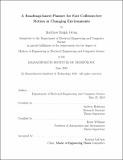| dc.contributor.advisor | Andreas Hofmann and Brian Williams. | en_US |
| dc.contributor.author | Orton, Matthew Ralph | en_US |
| dc.contributor.other | Massachusetts Institute of Technology. Department of Electrical Engineering and Computer Science. | en_US |
| dc.date.accessioned | 2018-12-18T19:47:26Z | |
| dc.date.available | 2018-12-18T19:47:26Z | |
| dc.date.copyright | 2018 | en_US |
| dc.date.issued | 2018 | en_US |
| dc.identifier.uri | http://hdl.handle.net/1721.1/119726 | |
| dc.description | Thesis: M. Eng., Massachusetts Institute of Technology, Department of Electrical Engineering and Computer Science, 2018. | en_US |
| dc.description | This electronic version was submitted by the student author. The certified thesis is available in the Institute Archives and Special Collections. | en_US |
| dc.description | Cataloged from student-submitted PDF version of thesis. | en_US |
| dc.description | Includes bibliographical references (pages 129-130). | en_US |
| dc.description.abstract | This thesis describes the development of a roadmap-based planner to enable high- DOF robotic arms to accomplish tasks based around motion planning problems with motions that feel reactive and intuitive in changing environments. My approach to accomplish this is to combine a roadmap-based motion planner with a sequential, convex trajectory optimization library called TrajOpt. The roadmap is used to produce collision-free seed trajectories, which are then provided to TrajOpt for optimization based on path length and proximity to obstacles. The difficulty of this approach arises from how to quickly update the roadmap as the environment changes to ensure that the seed trajectory provided to TrajOpt is always collision-free. This difficulty is addressed with a few different innovations. The roadmaps used by this planner are relatively sparse, so they are faster to update and perform searches on. Next, the sparse roadmaps are constructed offline along with a cache of shortest path solutions to minimize online search requirements. These solution caches are combined with an iterative search algorithm based around A* search with lazy collision checking. Finally, an adaptation of an incremental search algorithm, D* Lite, is developed to take advantage of the full environment knowledge assumed by my motion planner and the rapid optimization provided by TrajOpt while utilizing a lazier collision checking approach than the original algorithm. | en_US |
| dc.description.statementofresponsibility | by Matthew Ralph Orton. | en_US |
| dc.format.extent | pages | en_US |
| dc.language.iso | eng | en_US |
| dc.publisher | Massachusetts Institute of Technology | en_US |
| dc.rights | MIT theses are protected by copyright. They may be viewed, downloaded, or printed from this source but further reproduction or distribution in any format is prohibited without written permission. | en_US |
| dc.rights.uri | http://dspace.mit.edu/handle/1721.1/7582 | en_US |
| dc.subject | Electrical Engineering and Computer Science. | en_US |
| dc.title | A roadmap-based planner for fast collision-free motion in changing environments | en_US |
| dc.type | Thesis | en_US |
| dc.description.degree | M. Eng. | en_US |
| dc.contributor.department | Massachusetts Institute of Technology. Department of Electrical Engineering and Computer Science | |
| dc.identifier.oclc | 1078649349 | en_US |
